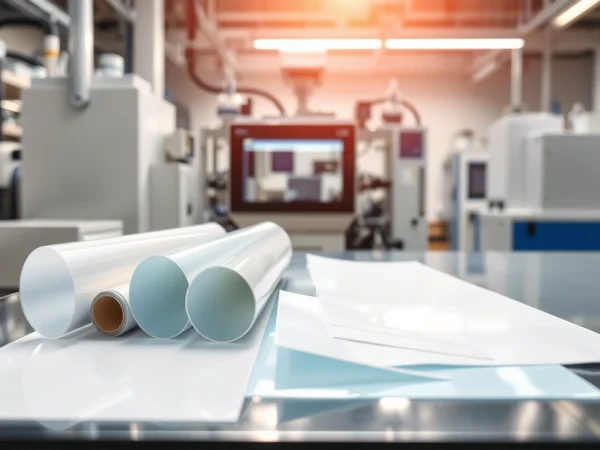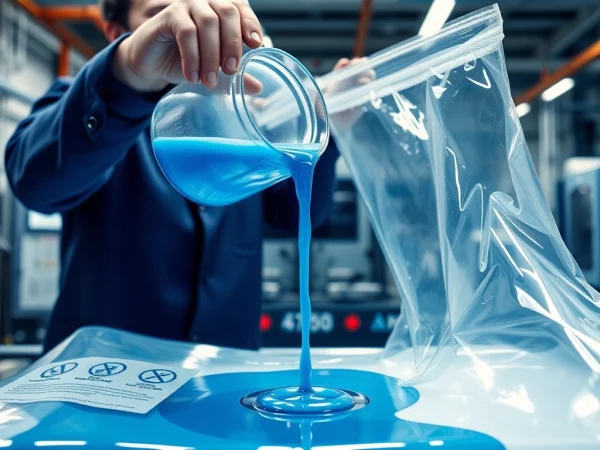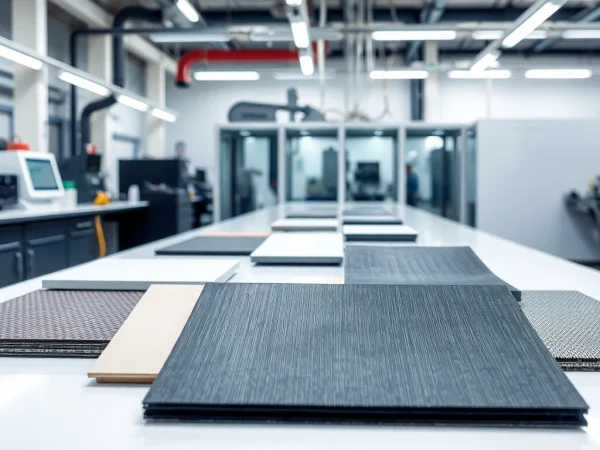Key Insights into HEC Manufacturer Processes and Applications
Understanding Hydroxyethyl Cellulose (HEC)
Hydroxyethyl cellulose (HEC) is a non-ionic, water-soluble polymer derived from cellulose, which is a natural polymer obtained from plant materials. HEC is known for its excellent thickening, emulsifying, and stabilizing properties, making it a valuable additive in various applications across multiple industries. As a versatile compound, HEC finds significant use in cosmetics, personal care products, pharmaceuticals, food processing, and construction. The role of an HEC manufacturer is crucial in producing high-quality HEC to meet the growing demand in these sectors.
What is HEC and Its Chemical Properties?
Hydroxyethyl cellulose is synthesized through the modification of cellulose. The process involves the etherification of cellulose with ethylene oxide, resulting in a compound that includes hydroxyethyl groups. This modification enhances the solubility of cellulose in water, providing the polymer with unique properties. HEC is characterized by its high viscosity and is often used as a thickener and stabilizer in aqueous solutions.
One of the key attributes of HEC is its ability to form a gel-like substance when mixed with water. This gelling property is attributed to the polymer’s structure, which allows for hydrogen bonding between HEC molecules and water, leading to increased viscosity. The molecular weight of HEC can vary, impacting its performance in different applications. Higher molecular weight HECs exhibit greater thickening power, while lower molecular weights find utility in applications requiring lower viscosity.
It is also important to note that HEC is non-toxic and environmentally friendly, making it suitable for use in food products and personal care items. Additionally, the thermal sensitivity of HEC allows it to maintain its properties over a range of temperatures, making it a reliable choice for various formulations.
Applications of HEC in Various Industries
The applications of HEC span several industries due to its versatile properties. Below are some notable areas where HEC is commonly utilized:
1. Cosmetics and Personal Care
HEC serves as a thickening agent in lotions, creams, shampoos, and conditioners, providing emulsification and enhanced texture. Its ability to stabilize formulations ensures that products have a consistent feel and appearance.
2. Pharmaceuticals
In the pharmaceutical industry, HEC is used in topical gels and ointments for its controlled release properties. It aids in drug delivery by enhancing the stability and consistency of medicinal formulations.
3. Food Industry
HEC is approved for use in food products as a thickener and stabilizer. It helps maintain texture and consistency in sauces, dressings, and refrigerated products, enhancing the overall consumer experience.
4. Construction
In construction, HEC is employed as a viscosity modifier in cement-based formulations, improving workability and water retention. Its adhesive properties also play a critical role in various construction materials, including adhesives and sealants.
5. Oil and Gas
HEC serves as a fluid loss additive in the oil and gas industry, particularly in drilling and fracturing fluids. It helps maintain viscosity amidst high shear rates, ensuring optimal performance during drilling operations.
The Role of HEC Manufacturer in Product Development
HEC manufacturers play a pivotal role in the supply chain of products utilizing hydroxyethyl cellulose. They not only produce HEC but can also influence product development by offering technical support, customization, and formulations tailored to specific needs. The collaboration between manufacturers and end-users helps in optimizing the performance of products to meet regulatory and consumer expectations.
By partnering with a knowledgeable HEC manufacturer, companies can access various grades of HEC with different molecular weights, enabling them to create formulations that satisfy market demands. Furthermore, manufacturers often provide insights into best practices for blending and using HEC, ensuring that clients achieve desired outcomes in their applications.
Choosing the Right HEC Manufacturer
When selecting an HEC manufacturer, it is essential to evaluate several factors to ensure a reliable partnership. The choice of manufacturer can significantly impact the quality, performance, and compliance of the final products.
Factors to Consider When Selecting a Manufacturer
- Experience and Expertise: Look for manufacturers with a proven track record in producing HEC and a deep understanding of the applications. The more experience a manufacturer has, the better they can respond to industry shifts and client needs.
- Product Quality: Assess the quality assurance processes the manufacturer employs. Consistency in HEC production is critical, and high-quality standards ensure reliable performance in diverse applications.
- Customization Capability: A good manufacturer should offer custom grades of HEC suitable for specific applications. The ability to tailor the product to meet your formulation requirements can be a significant advantage.
Quality Assurance in HEC Production
Quality assurance is integral to HEC production, ensuring that the final product meets the necessary specifications and regulatory requirements. Manufacturers should implement strict quality control measures throughout the production process, from raw material sourcing to the final product testing. This includes:
- Raw Material Inspection: Ensuring raw materials are pure and meet predefined standards is the first step in producing high-quality HEC.
- Process Monitoring: Regular monitoring and testing of production processes help identify any deviations that may affect product quality.
- Final Product Testing: The final HEC product should undergo rigorous testing to evaluate its viscosity, solubility, and other critical properties to ensure they align with customer specifications.
Evaluating Manufacturer Reputation and Reliability
Researching a manufacturer’s reputation is vital for determining reliability. Consider the following strategies to evaluate potential partners:
- Client Testimonials: Look for reviews and case studies showcasing the manufacturer’s previous work and partnerships with other clients.
- Certifications: Verify if the manufacturer holds certifications such as ISO, which might indicate adherence to Quality Management Systems that enhance product reliability.
- Industry Reputation: Engage in industry forums or associations to gather insights on the manufacturer’s standing within the community.
HEC Manufacturing Processes Explained
Overview of Manufacturing Techniques
The manufacturing of hydroxyethyl cellulose involves several key processes that ensure the final product’s efficacy and quality. The typical steps include:
- Cellulose Extraction: The process begins with the extraction of cellulose from plant sources. Common sources include cotton linters and wood pulp, which provide the base material required for HEC production.
- Etherification Process: The extracted cellulose undergoes etherification, where it reacts with ethylene oxide. This reaction introduces hydroxyethyl groups to the cellulose chain, resulting in hydroxyethyl cellulose.
- Purification: The product is purified to remove any unreacted materials and by-products. Various methods like precipitation, washing, and drying are employed to achieve the desired purity levels.
- Granulation and Drying: The purified HEC is dried and ground to the desired particle size for ease of handling and incorporation into formulations.
Sustainable Practices in HEC Production
With growing environmental concerns, HEC manufacturers are increasingly adopting sustainable practices. This includes sourcing raw materials from renewable sources, minimizing waste during production, and utilizing eco-friendly solvents. Additionally, manufacturers are investing in technologies that reduce energy consumption and emissions over traditional production methods.
For example, some manufacturers are exploring enzymatic processes that can minimize chemical waste and enhance the efficiency of cellulose modification. By implementing these practices, manufacturers not only comply with regulations but also appeal to environmentally conscious consumers.
Innovations in HEC Manufacturing Technologies
Ongoing research and development are essential for sustaining competitive advantage in the HEC manufacturing sector. Innovations in technologies can improve production efficiency, enhance product functionality, and reduce environmental impacts. Some notable advancements include:
- Automation: The use of automated systems in HEC production processes can reduce human error and improve product consistency.
- Advanced Analytical Techniques: Incorporating advanced testing technologies enables manufacturers to understand the properties and performance of HEC better, leading to improved production methods.
- 3D Printing: Exploring uses for HEC as a filament or binder in 3D printing applications represents a cutting-edge avenue for HEC developers.
Challenges Faced by HEC Manufacturers
Despite the advantages of HEC, manufacturers encounter several challenges in production and market fluctuation. Addressing these challenges successfully is crucial for maintaining operational efficiency and market relevance.
Regulatory Compliance in Chemical Manufacturing
HEC manufacturers must navigate a complex landscape of regulatory requirements concerning safety, quality, and environmental impact. Compliance with regulations such as REACH (Registration, Evaluation, Authorization, and Restriction of Chemicals) and various FDA guidelines for food and pharmaceutical applications is essential. This requires manufacturers to keep abreast of legislation changes and ensure their processes and products remain compliant.
Addressing Supply Chain Issues
The global supply chain can pose challenges, impacting the timely sourcing of raw materials and the distribution of finished products. Manufacturers need to develop a robust supply chain strategy, including diversifying suppliers and maintaining open lines of communication. This proactive approach helps mitigate risks associated with supply disruptions.
Mitigating Environmental Impact
As environmental awareness increases, HEC manufacturers face pressure to reduce their ecological footprint. This involves complying with strict environmental regulations and implementing practices that minimize waste and emissions. Manufacturers can invest in sustainable technologies and practices to help offset their environmental impact, making them more appealing to environmentally conscientious clients.
The Future of HEC and Its Manufacturers
The future of hydroxyethyl cellulose is bright as market trends shift toward more sustainable and versatile products. Manufacturers must adapt to these changing dynamics to remain competitive and responsive to evolving consumer needs.
Trends Impacting HEC Production and Market Demand
Several trends are shaping the HEC market:
- Increased Demand for Eco-Friendly Products: Consumers are increasingly opting for products that are environmentally friendly, driving demand for HEC as a biodegradable alternative.
- Advancements in Formulation Technology: With breakthroughs in formulation science, HEC is more frequently incorporated into innovative applications across industries.
- Globalization: As companies expand into emerging markets, the need for HEC and related products is expected to grow, influencing production strategies and supply chains.
Emerging Applications for HEC
Innovation in the application of HEC continues to create new market opportunities. Potential areas of growth include:
- Personal Care Innovation: Continued development in cosmetics, such as adapting HEC for vegan and organic formulations, enhances relevance.
- Biodegradable Alternatives: Creating products using HEC that serve as biodegradable options in textiles and packaging could alleviate environmental concerns.
- Advanced Drug Delivery Systems: As the pharmaceutical industry evolves, research into tailored HEC formulations can ensure better drug release profiles.
How HEC Manufacturers Can Adapt to Change
To thrive in an ever-evolving market landscape, HEC manufacturers must focus on flexibility and continued innovation. Adapting to changes can include investing in research and development, enhancing production processes to be more sustainable, and listening to customer feedback to refine product offerings. Furthermore, collaboration with academic institutions and R&D entities can foster innovation and ensure manufacturers stay ahead of industry trends.
By embracing these changes, HEC manufacturers can secure a robust position in this dynamic market, contributing not only to their growth but also to a more sustainable future across industries.










